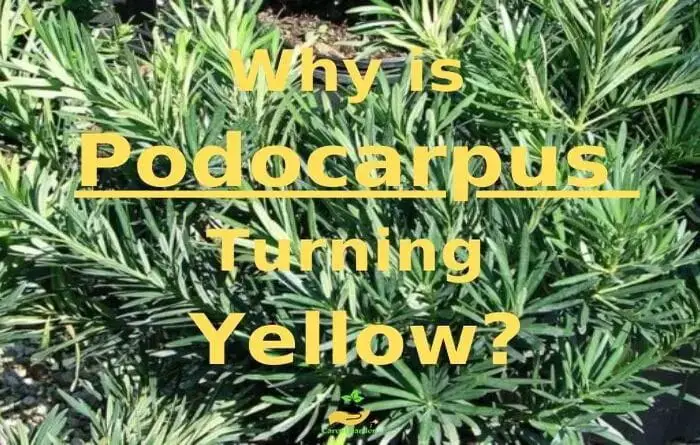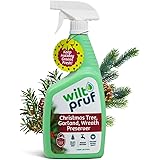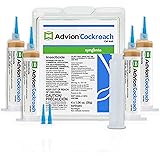Is your podocarpus tree turning yellow and losing its vibrant green color? Don’t worry, we’ve got you covered! Dealing with yellowing podocarpus can be frustrating, but understanding the causes behind this issue is the first step towards restoring your tree’s health and beauty. In this article, we’ll explore the common reasons why podocarpus leaves turn yellow, provide simple yet effective solutions, and offer some useful tips to prevent further yellowing.
So if you’re eager to revive your yellowing podocarpus and bring back its lush green foliage, keep reading—you’re in the right place!
Yellowing Podocarpus: Causes, Prevention, and Treatment
Podocarpus, also known as yew plum pine, is a popular evergreen shrub or tree common in many gardens and landscapes. With its vibrant green foliage, it adds beauty and elegance to any outdoor space. However, if you notice your podocarpus leaves turning yellow, it can be a cause for concern. In this article, we will explore the reasons behind yellowing podocarpus leaves and provide helpful tips on prevention and treatment.
Understanding Podocarpus
Before we dive into the details of yellowing podocarpus leaves, let’s first get familiar with this versatile plant. Podocarpus is a genus of coniferous plants that belong to the family Podocarpaceae. It comprises approximately 100 species, with Podocarpus macrophyllus being one of the most popular varieties used in landscaping.
This evergreen plant is native to East Asia and can be found in various sizes, ranging from shrubs to tall trees. Podocarpus is known for its dense foliage, which consists of long, narrow leaves. It produces small, inconspicuous flowers that eventually develop into fleshy, purplish fruits.
Causes of Yellowing Podocarpus Leaves
When the lush green color of your podocarpus leaves starts to fade and turn yellow, several factors could be responsible. It’s essential to identify the underlying cause to take appropriate measures and restore your plant’s health. Here are some common reasons for yellowing podocarpus leaves:
1. Environmental Stress
Podocarpus is generally a hardy plant, but it can be sensitive to extreme weather conditions. Exposure to intense sunlight, high temperatures, or strong winds can stress the plant, leading to yellowing leaves. Additionally, overwatering or underwatering can also cause stress and contribute to leaf discoloration.
2. Nutrient Deficiencies
Like any other plant, podocarpus requires essential nutrients to thrive. A lack of nutrients can manifest as yellowing leaves. Some potential nutrient deficiencies that could cause this issue include:
– Nitrogen deficiency: This essential nutrient is responsible for healthy leaf growth. If your podocarpus lacks nitrogen, the leaves may turn yellow, starting from older ones.
– Iron deficiency: Iron is crucial for chlorophyll production, which gives leaves their green color. Insufficient iron can result in yellowing leaves with green veins.
– Magnesium deficiency: Magnesium is vital for photosynthesis and overall plant health. Without enough magnesium, leaves may develop yellow patches between their veins.
3. Soil pH Imbalance
Podocarpus prefers slightly acidic to slightly alkaline soil with a pH range of 5.5 to 7.5. If the soil pH deviates significantly from this range, it can impact nutrient availability, leading to yellowing leaves. A pH imbalance may also affect the microbial activity in the soil, further affecting the plant’s health.
4. Pests and Diseases
Yellowing leaves can be a symptom of pest infestations or diseases affecting your podocarpus. Common pests that target podocarpus include spider mites, scale insects, and mealybugs. These pests feed on the plant sap, causing stress and yellowing leaves.
Diseases such as root rot, leaf spot, or fungal infections can also lead to leaf yellowing. These conditions often occur due to overwatering, poor drainage, or inadequate airflow around the plant.
Preventing and Treating Yellowing Podocarpus
Now that we’ve identified the possible causes of yellowing podocarpus leaves, let’s explore preventive measures and treatments to restore your plant’s vitality.
Read More: Can Monstera Thrive In Low Light?
1. Environmental Care
– Provide adequate sunlight: While podocarpus prefers partial shade, it still requires a few hours of direct sunlight daily. Ensure your plant receives enough sunlight without being exposed to scorching afternoon rays.
– Maintain proper watering: Avoid overwatering or underwatering your podocarpus. Check the soil moisture regularly and water when the top inch of soil is dry. Adjust the watering frequency according to environmental conditions and the plant’s specific needs.
– Mulch the soil: Apply a layer of organic mulch around the base of the plant to conserve moisture, regulate soil temperature, and suppress weed growth. Mulching also enhances nutrient availability and improves soil structure.
– Protect from extreme weather: Shield your podocarpus from harsh weather conditions such as strong winds, frost, or excessive heat. Consider providing temporary protection during extreme weather events.
2. Nutrient Management
– Conduct a soil test: Test your soil’s pH and nutrient levels to identify any deficiencies or imbalances. This will help you determine the appropriate fertilizers or soil amendments needed for your podocarpus.
– Fertilize as needed: Based on the soil test results, apply a balanced slow-release fertilizer specifically formulated for trees and shrubs. Follow the manufacturer’s instructions regarding dosage and application frequency.
– Use organic matter: Incorporate organic matter, such as compost or well-rotted manure, into the soil to improve its fertility and enhance nutrient retention. Organic matter also improves soil structure and encourages beneficial microbial activity.
3. Pest and Disease Control
– Regular inspection: Regularly inspect your podocarpus for signs of pest infestation or disease. Identify the specific pests or diseases affecting your plant and choose suitable control methods.
– Natural predators: Encourage natural predators like ladybugs, lacewings, or birds to control pest populations. These beneficial insects feed on pests and help maintain a balanced ecosystem in your garden.
– Organic insecticides/fungicides: If necessary, consider using organic insecticides or fungicides to combat pests or diseases. Follow the instructions on the product label carefully and apply them when the plant is not in direct sunlight or during the cooler parts of the day.
Yellowing podocarpus leaves can be distressing for any plant enthusiast, but with proper care, most cases can be resolved. By understanding the potential causes and implementing preventive measures, you can keep your podocarpus vibrant and healthy. Regular monitoring, environmental care, nutrient management, and pest control are key to maintaining the beauty of this magnificent plant. Remember, a little care goes a long way in ensuring the longevity and vitality of your yellowing podocarpus.
Podocarpus: What You Must Know Before Planting Them
Frequently Asked Questions
Frequently Asked Questions (FAQs)
Why is my Podocarpus yellowing?
The yellowing of Podocarpus foliage can occur due to various reasons, such as nutrient deficiencies, environmental stress, pest infestations, or fungal infections. It is essential to identify the specific cause to determine the appropriate treatment.
What are the common nutrient deficiencies causing yellowing in Podocarpus?
Common nutrient deficiencies in Podocarpus leading to yellowing include nitrogen, iron, and manganese deficiencies. Lack of these essential nutrients can affect chlorophyll production and lead to yellow or pale leaves.
How can I treat nutrient deficiencies in my Podocarpus?
To treat nutrient deficiencies in Podocarpus, you can apply a balanced fertilizer specifically formulated for woody plants. Look for a fertilizer with adequate nitrogen, iron, and manganese content. Follow the application instructions provided by the manufacturer for best results.
What environmental factors can cause yellowing in Podocarpus?
Environmental factors such as excessive sunlight, heat stress, overwatering, or poor drainage can contribute to yellowing in Podocarpus. Ensure that the plant is placed in a suitable location with appropriate sunlight exposure and well-drained soil.
How can I prevent yellowing due to environmental stress?
To prevent yellowing due to environmental stress, provide your Podocarpus with the ideal growing conditions. Place the plant in a location that offers partial shade, especially during hot summer months. Ensure proper watering, allowing the soil to dry slightly between waterings to prevent overwatering.
Are there any common pests that cause yellowing in Podocarpus?
Yes, some common pests that can cause yellowing in Podocarpus include spider mites, scale insects, and aphids. These pests feed on the plant’s sap, leading to foliage discoloration and damage.
How can I control pest infestations in my Podocarpus?
To control pest infestations in Podocarpus, you can try various methods such as using insecticidal soaps or oils, introducing beneficial insects, or manually removing pests. It’s crucial to identify the specific pest and choose the appropriate control method for effective results.
Can fungal infections cause yellowing in Podocarpus?
Yes, fungal infections like root rot or leaf spot diseases can cause yellowing in Podocarpus. These infections often thrive in overly moist conditions and can affect the plant’s overall health and appearance.
How can I treat fungal infections in Podocarpus?
To treat fungal infections in Podocarpus, it is essential to improve the plant’s growing conditions. Ensure proper drainage, avoid overwatering, and remove any infected plant parts. Fungicides may also be used as recommended by a professional if the infection persists.
Read More: Do Pothos Need Drainage?
Final Thoughts
Yellowing podocarpus is a common issue faced by many gardeners. To rectify this problem, it is essential to identify the underlying causes. Firstly, improper watering techniques can lead to yellowing leaves. Ensure that the podocarpus is receiving adequate water, avoiding both under and over-watering. Secondly, nutrient deficiencies can contribute to the yellowing of the foliage. Use a balanced fertilizer specifically formulated for podocarpus to provide the necessary nutrients.
Lastly, excessive sunlight or lack thereof can also cause yellowing. Find a suitable location for your podocarpus that provides the right amount of light. By addressing these factors, you can successfully overcome the challenge of yellowing podocarpus.
Auto Amazon Links: No products found.
Wilt-Pruf® Christmas Tree/Cutting Preserver Spray |Preserves Christmas Trees, Wreaths, Garlands, Cuttings and Carved Pumpkins | Reduces Needle Drop | Keeps Cut Trees Fresh Longer | Natural (32 oz)
$21.99 (as of November 14, 2025 21:32 GMT +00:00 - More info- Product prices and availability are accurate as of the date/time indicated and are subject to change. Any price and availability information displayed on [relevant Amazon Site(s), as applicable] at the time of purchase will apply to the purchase of this product.
Perfect Plants Christmas Tree Saver 8oz. | Easy Use Xmas Tree Preserver Food | Have Healthy Green Christmas Trees All Holiday Season
$13.99 (as of November 14, 2025 21:32 GMT +00:00 - More info- Product prices and availability are accurate as of the date/time indicated and are subject to change. Any price and availability information displayed on [relevant Amazon Site(s), as applicable] at the time of purchase will apply to the purchase of this product.
HoHoHoH2o Automatic Christmas Tree Watering System Device, Santa’s Tree Helper Keeps Your Christmas Tree Healthy and Fresh, Refillable 2.5 gallons Capacity Box - Red/Snowflakes
$99.95 (as of November 14, 2025 21:32 GMT +00:00 - More info- Product prices and availability are accurate as of the date/time indicated and are subject to change. Any price and availability information displayed on [relevant Amazon Site(s), as applicable] at the time of purchase will apply to the purchase of this product.
Christmas Tree Watering Funnel – 39 Inch Adjustable 3-Section Design, Reusable & Spill-Free, Easy Watering for Real Christmas Trees
$17.99 (as of November 14, 2025 21:32 GMT +00:00 - More info- Product prices and availability are accurate as of the date/time indicated and are subject to change. Any price and availability information displayed on [relevant Amazon Site(s), as applicable] at the time of purchase will apply to the purchase of this product.
Forest Fresh Christmas Tree Preservative Tablets – Tree Water Additive for Live Fresh-Cut Trees – Keeps Trees Hydrated and Reduces Needle Drop – Non-Toxic, Made in USA – 1 Packet (8 Tablets)
$5.99 (as of November 14, 2025 21:32 GMT +00:00 - More info- Product prices and availability are accurate as of the date/time indicated and are subject to change. Any price and availability information displayed on [relevant Amazon Site(s), as applicable] at the time of purchase will apply to the purchase of this product.
Zevo Flying Insect Trap & 3 Refill Cartridges - Plug in Fly Trap & Indoor Bug Catcher for Gnats, House & Fruit Flies - Blue & UV Light Technology, Mess-Free Alternative to Bug Zapper
$25.96 (as of November 15, 2025 08:34 GMT +00:00 - More info- Product prices and availability are accurate as of the date/time indicated and are subject to change. Any price and availability information displayed on [relevant Amazon Site(s), as applicable] at the time of purchase will apply to the purchase of this product.
Zevo Flying Insect Trap Official Refill Cartridges - Fits Both Zevo Trap & MAX Indoor Fly Trap - Authentic Trap+Lock Technology to Catch Gnats, House & Fruit Flys (4 Official Refill Cartridges)
$14.97 (as of November 15, 2025 08:34 GMT +00:00 - More info- Product prices and availability are accurate as of the date/time indicated and are subject to change. Any price and availability information displayed on [relevant Amazon Site(s), as applicable] at the time of purchase will apply to the purchase of this product.
TERRO Fruit Fly Traps for Indoors (4 Pack) + 180 Days of Lure Supply
$10.95 (as of November 15, 2025 08:34 GMT +00:00 - More info- Product prices and availability are accurate as of the date/time indicated and are subject to change. Any price and availability information displayed on [relevant Amazon Site(s), as applicable] at the time of purchase will apply to the purchase of this product.
TERRO Ant Killer Bait Stations T300B - Liquid Bait to Eliminate Ants - Bait System - 12 Count Stations for Effective Indoor Ant Control
$11.44 (as of November 15, 2025 08:34 GMT +00:00 - More info- Product prices and availability are accurate as of the date/time indicated and are subject to change. Any price and availability information displayed on [relevant Amazon Site(s), as applicable] at the time of purchase will apply to the purchase of this product.
Advion Cockroach Gel Bait, 4 Tubes x 30-Grams, 1 Plunger and 2 Tips, German Roach Insect Pest Control, Indoor and Outdoor Use, Roach Killer Gel for American, German and Other Major Cockroach Species
$26.99 (as of November 15, 2025 08:34 GMT +00:00 - More info- Product prices and availability are accurate as of the date/time indicated and are subject to change. Any price and availability information displayed on [relevant Amazon Site(s), as applicable] at the time of purchase will apply to the purchase of this product.











